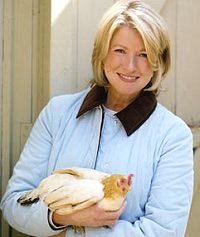I'd get out there, and I'd find one bird in the laying box and the other one (the screecher) wanting to use the occupied one rather than the empty one right next to it. Said screech was not a call of DANGER!, rather it was the equivalent of "Come on, hurry up bitch, I gotta get in there!"
Over the years, I have come to know what the different screeches mean (one more clue as to just how pathetic my life has become). Sometimes they're out scratching around the woods and one will get separated from the flock. There's a screech that says "HEY, WHERE'D EVERYBODY GO?" That always results in a callback from the flock.
There's another that tells you: the pellet bowl is empty, and would you please get off your duff and fill it?
Now I know when something is really wrong in the henhouse, and when it's just a little hen-fight going on.
As you read this, another bird call may come to mind: cuckoooo!
But! I offer you this from a brochure a nice young Vegan gave to me today outside the Student Union:
"Contrary to what one may hear from the industry, chickens are not mindless, simple automata, but are complex behaviorally, do quite well in learning, show a rich social organization, and have a diverse repertoire of calls. Anyone who has kept barnyard chickens also recognizes their significant differences in personality."
Bernard E. Rollin PhD
Farm Animal Welfare
Iowa State University Press, 2003
Farm Animal Welfare
Iowa State University Press, 2003
A fellow traveler. Here's the site: OpposeCruelty.org
